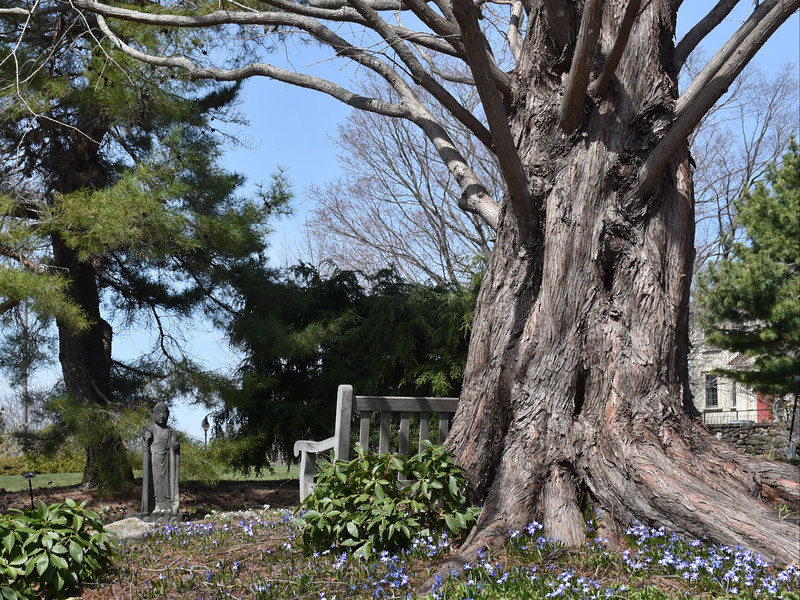
Dawn Redwood growing at New England Botanic Garden at Tower Hill.
By Ruth Seward
Removing so many trees in Worcester County due to the Asian Long-horned Beetle devastation, created a perfect canvass to introduce the Mighty Dawn Redwood (Metasequoia) into our urban greenspaces. This majestic conifer was one of the most widespread tree species in the Northern Hemisphere while dinosaurs roamed the earth. It was deemed extinct by scientists, but in 1944, was discovered growing in a forest in Sichuan province of China. Soon after this discovery, scientists from around the world, including from the Arnold Arboretum, collected seeds from this tree to propagate this amazing specimen. Today, the Dawn Redwood is easy to find at local nurseries in our area and these trees are directly linked to the seeds collected back in the 1940s. There are also groves of Metasequoia that have been propagated at the Crescent Ridge Dawn Redwoods Preserve (CRDRP) in North Carolina, to ensure that this specimen will remain in North America for years to come.
If you walk through Worcester’s Dodge Park, in the middle of winter, you might be struck by this large, bare tree that could easily be mistaken as dead. The Dawn Redwood is the only member of the Redwood family to lose its needles in the fall and regrow them come spring, allowing for colorful foliage at these times of the year. Generally the smallest of the redwood family, the Metasequoia can grow taller than 160 feet and close to 7 feet in diameter. A fast grower, the Dawn Redwood can gain 18 inches annually so it needs to be planted in a location with plenty of room.
This tree is considered ornamental because of its beauty and it provides benefits to the North American ecosystem. The tree offers shelter for the winter for birds and small animals. The foliage is edible to animals. In China, the foliage of the Dawn Redwood tree is used as fodder for livestock. Preferring soil that is wet but well drained and acidic, the adaptability of the Dawn Redwood makes it the perfect tree for a variety of locations and a good tree to soak up the rain in flood prone areas. Wood pulp from the tree is used for plywood and composite. The wood is not highly sought after but it’s used for building construction in plywood form.
For me, having this beautiful remnant of prehistoric time alive in our modern city is exciting and amazing. I appreciate the research and preservation techniques of the scientists from places like the Arnold Arboretum, which allowed such an amazing tree to live in North America today. For more reading on this tree click here.
